The Court Street Bridges of Watertown, NY
It’s said that the quickest way between two points is always under construction, and, at the very least, the second Court Street Bridge was a good example of this. Before Watertown, N.Y. was incorporated as a city, and even afterward, travelers were trying to reach the other side of the Black River from various points.

One of these points, the Court Street Bridge, had an entrance quite different from what we know today. In the 1800s, Court Street intersected with what was then known as River Street, which was later renamed Newell Street.
It may seem quite odd for this, but back then, Court Street, rather than going up and over the river and allowing for traffic to pass underneath it on Newell Street as it has for nearly the last 100 years, sloped downward and intersected with the street which was a bustling hub of activity with both trains and trolleys alike, the trolleys crossing the Court Street Bridge on their way to West Main Street and the old car barn, or out of town to Glen Park, Brownville, and Dexter.
It’s important to note this because seeing the older photos of the Court Street Bridge in its covered-wooden and iron incarnations can be a bit discombobulating. Here are a few photos of the area, which used to be the intersection of Court and River Streets, with some familiar elements that may help readers orient themselves.

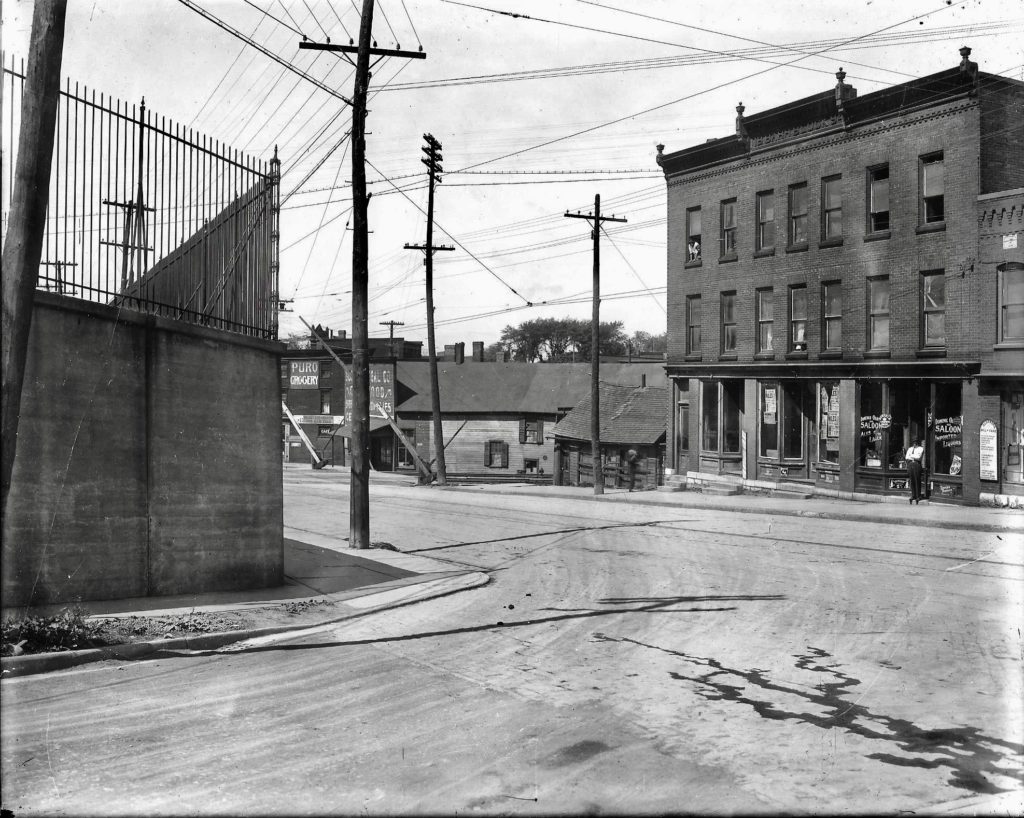



With that short overview provided, hopefully, the photos of the older bridges make sense. One of the earlier bridges, a covered wooden bridge, was built in 1850. This particular version was worthy of Washington Irving’s “The Legend of Sleepy Hollow.” Two stone walls were built on both sides of the river for the bridge to rest on, with steel support in its mid-section. One can only imagine how creaky it must have been, especially crossing that bridge on a cold, windy night.

In the May 24, 1884 edition of the Watertown Daily Times, the subject of replacing the bridge was discussed–
The Bridge Question
Shall a New One Replace the Old Court-Street Tunnel?
The action of the common council at the last meeting in ordering a special election and submitting to the taxpayers the question of building an iron bridge in place of the unsightly wooden tunnel which now adorns Court St. at its crossing over the Black River has awakened considerable discussion. The common council decided that the cost of the proposed new bridge would not exceed $10,000. It has been established that the old bridge can be repaired for the sum of $1,850 in such a manner that it will be of service for some time to come. This is disputed, however.
Later that year, much like the soon-to-be-added Factory Street Bridge, a more stable iron bridge replaced the wooden one in the same location, using the same stone foundations on the banks of the Black River for support. The bridge supported trolleys traveling across it to West Main Street and out of town.

On September 28, 1921, the new Court Street bridge officially opened for vehicle traffic. Pedestrian traffic had been allowed to pass over the bridge the previous few months before the final brick and pavement were laid. The Black River Traction Co. trolleys were also approved to cross the bridge a month before vehicles.
With its opening to the public, Watertown would have one of the more unique, modern bridges of its time: a concrete double-deck bridge that allowed for traffic, including trains, to pass underneath its two decks. The top deck provided direct access from Court and N. Massey Streets to LeRay and West Main Streets.
The bottom deck was accessible to traffic on Newell Street, and separate lanes on each side provided one-way traffic. Drivers could access via West Main Street and LeRay Streets for quick access to Newell Street and its vicinity rather than drive up to Coffeen and then back down. It proved that the quickest route between two points is always under construction, and convenience was had as a result.

A large tusk was found in the stone dump by the Court Street Bridge during its construction. As reported by the Watertown Daily Times on June 30th, 1921–
Finds Fossilized Tusk Of Animal
Probably Deposited Here During Glacial Period
The fossilized Tusk of a huge mammal of prehistoric days was discovered last Friday in the stone dump at the Court Street bridge by De Witt M. Carter, a well known engineer and title searcher of this city, who promptly added it to his collection of geological specimens, curios and historic relics.
The tusk measures 16 inches in length, is rectangular in shape at the base where it went into the jaw and the dimension of that rectangle is five inches and the other two and one-half inches. The weight is ten and one-quarter pounds.
This wouldn’t be the first time Court Street Bridge was the location of an unusual specimen. In 1911, a large and “sober” crowd watched from the bridge what was described as a “Monster” and sea serpent swimming in the Black River. Similar sightings of what had become known as “The Black River Monster” occurred throughout the area in the years to follow, most noticeably in Lyons Falls during the 1950s.
The bridge was a marvel of engineering for its time and another crown jewel for Watertown in an era where affluence was still showcased proudly in many of its newer buildings and architectural achievements. Unfortunately, the bridge, much like the city’s affluence, couldn’t last the test of time. During the 1980s, the bridge’s condition began to deteriorate and the lower deck’s lanes were closed off, one at a time, to traffic due to hazards. It wasn’t long before the bridge would need replacing.
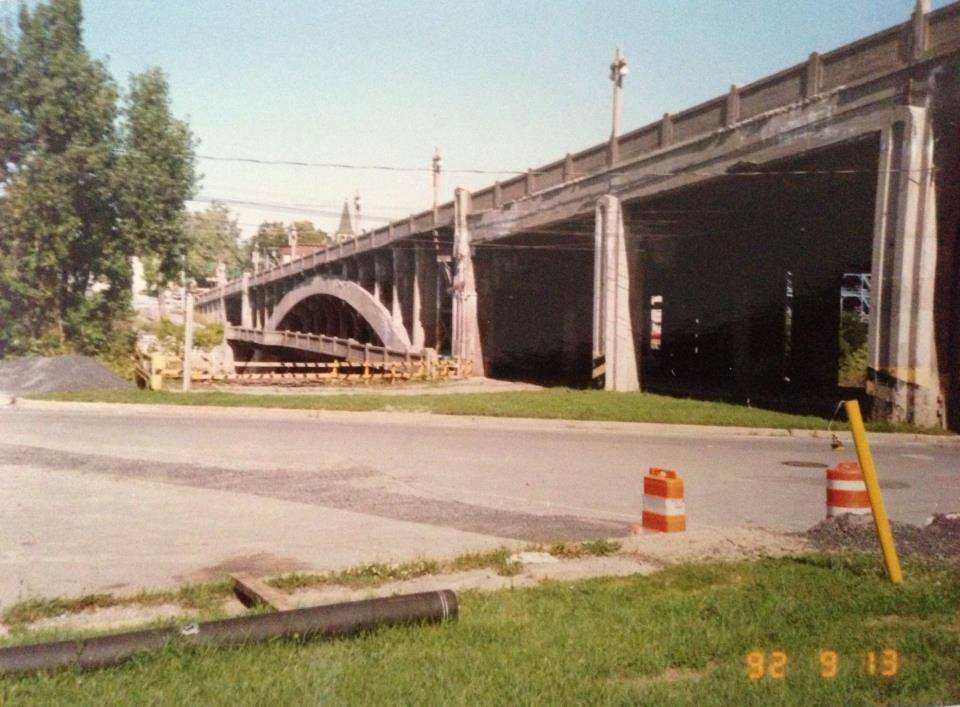
In 1993, the bridge was dismantled section by section until all that was left was the main span over the Black River. With a whole lot of explosives, the remains of the bridge would fall into the Black River. The new bridge erected would take a slightly different angle across the river, necessitating a section of buildings to be removed on the corner of West Main and LeRay Streets. Amongst the casualties was the building that Dante’s Bar & Restaurant, a favorite for many Watertown residents, called home for many years.
In a letter to the editor published June 18, 1993, Alex T. Duffy wrote about “A Walk Through The Past Along River Street.” In it, he mentioned the old iron bridge and how the old Rome, Ogdensburg Railroad Depot was built in 1850, though it wasn’t specified if it was built at that time for that purpose since the railroad didn’t arrive until 1861. At the end of his letter, he wrote of the old double-deck concrete bridge, “And now I am watching them tear down our old bridge. I am the last one left who worked on it in 1920. Time marches on.”







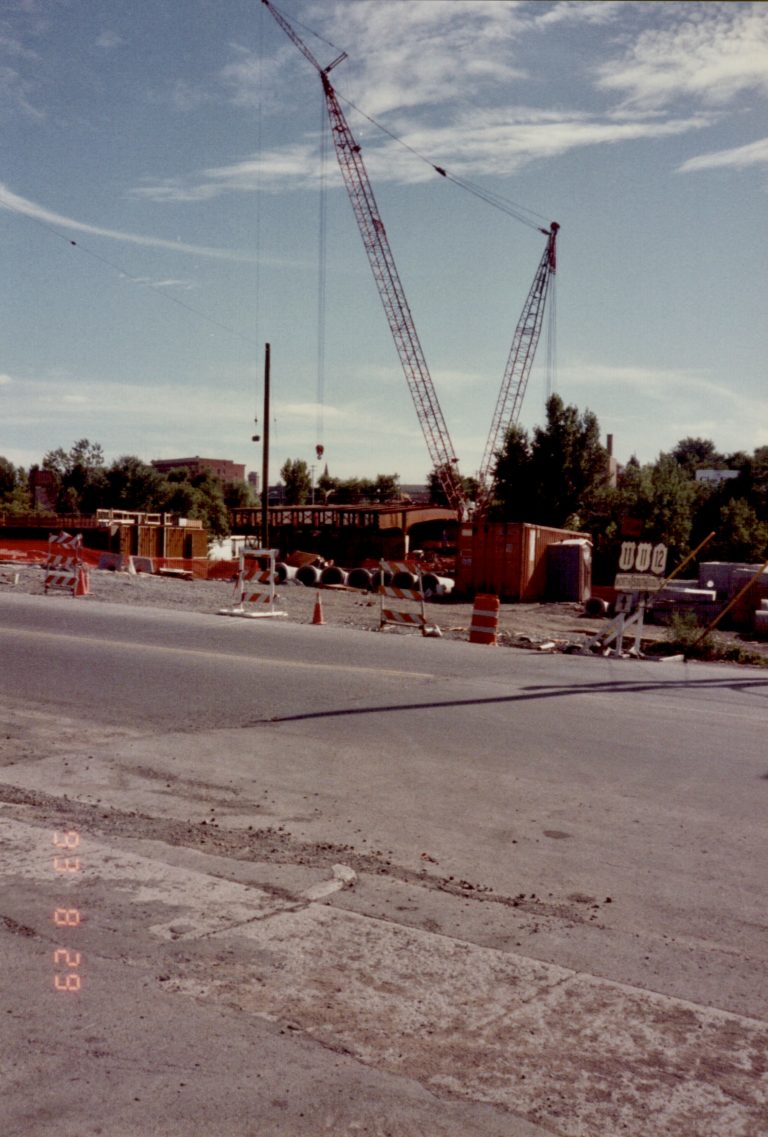




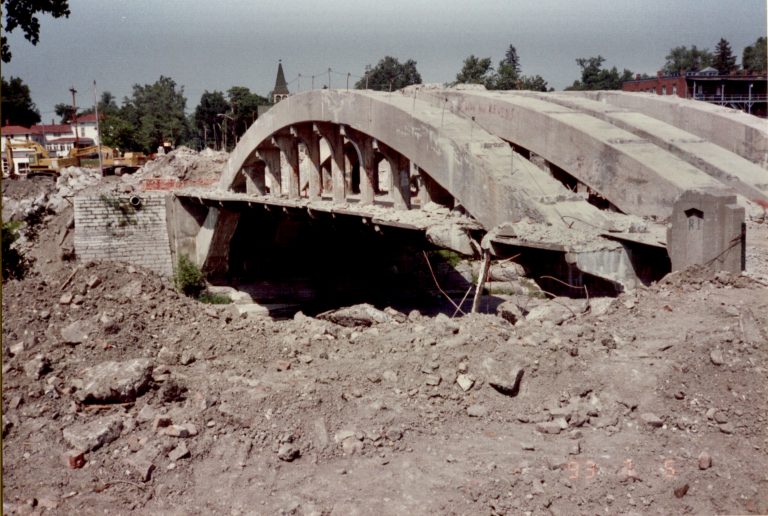

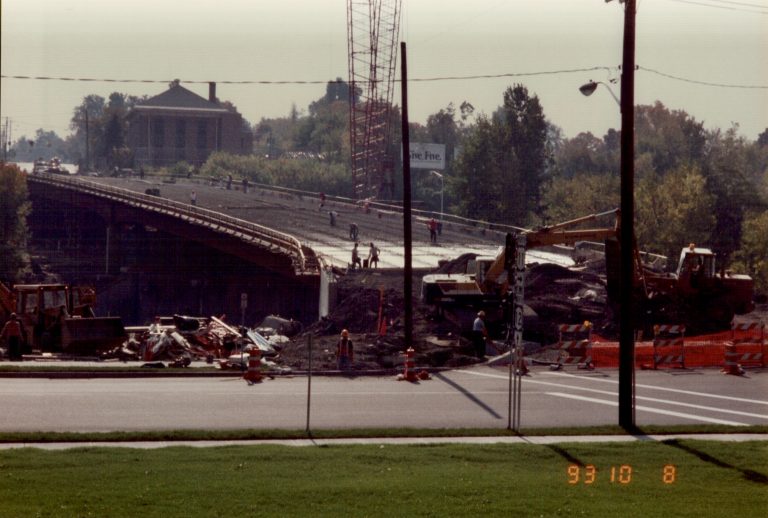








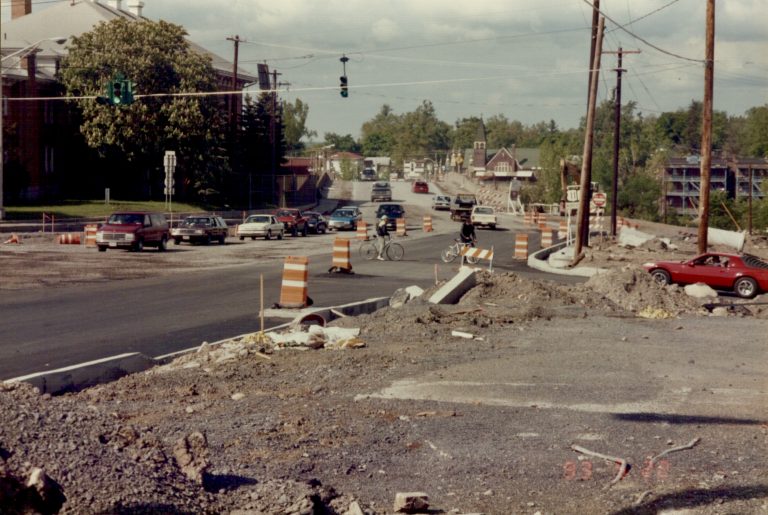






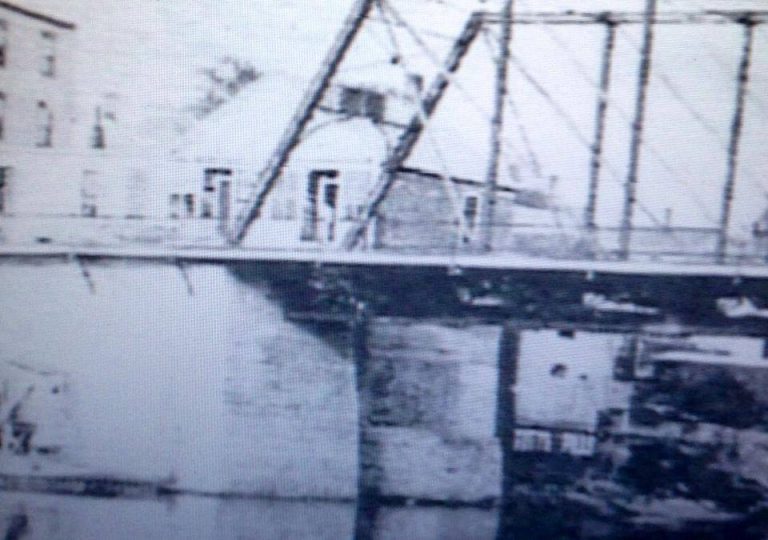





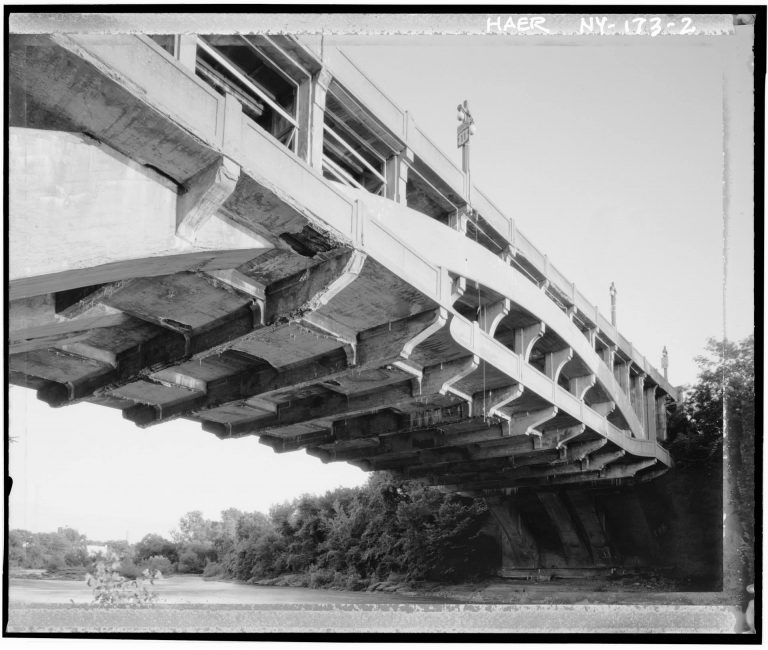

















1 Reviews on “The Court Street Bridges (1850 – Present)”
Remarkable photos and very interesting article. Thank you for sharing.